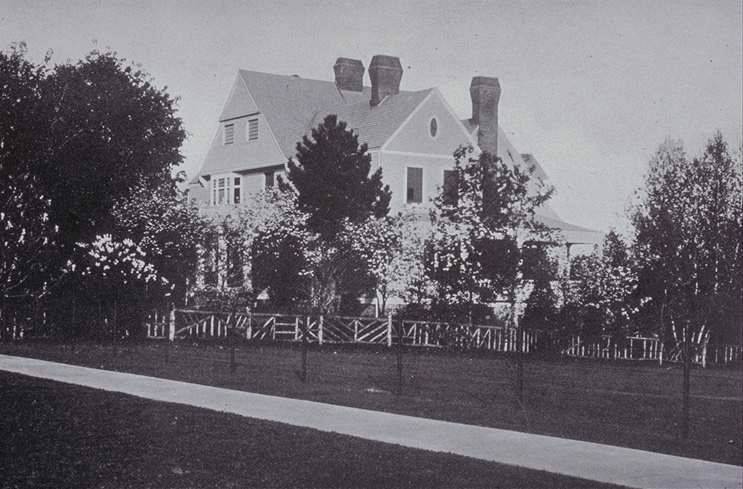Cannon Club
Cannon Club circa 1895

Princeton University. Property of the Trustees of Princeton University.
Source: Bric-a-Brac, 1895, p.192
Cannon Club from 1896-1899

Princeton University. Property of the Trustees of Princeton University.
Source: Bric-a-Brac, 1902, p.188
The following year, Cannon occupied the "Incubator", which Cap & Gown had just relocated to Olden Street.
Osborn House circa 1900

Princeton University. Property of the Trustees of Princeton University.
Source: Bric-a-Brac, 1901, p.182
Cannon remained in the Incubator until 1899, when it purchased the Osborn house on the south side of Prospect, ...
Cannon Club circa 1908

Princeton University. Property of the Trustees of Princeton University.
Source: Bric-a-Brac, 1908, p.134
...between the McCosh and West residences.
Cannon Club unbuilt design circa 1908

Princeton University. Property of the Trustees of Princeton University.
Source: Bric-a-Brac, 1910, p.214
By 1908, the old Osborn House was deteriorating badly, and a design for a new clubhouse appeared in the Class of 1910 Bric. This proposal, which looks suspiciously like Cottage Club, was not executed, but shortly thereafter Cannon commissioned Edgar Seeler, a Philadelphia architect, to design a new building.
Cannon Club circa 1917

Princeton University. Property of the Trustees of Princeton University.
Source: Bric-a-Brac, 1917, p.254
The resulting structure was the first club on Prospect to use the local stone that was increasingly prevalent in the architecture of the campus. (This gives the building its academic feel.) Cannon had main components: the main, three-story body and the single-story kitchen wing on the east, the latter dominated by an enormous chimney. Cannon's facade is remarkably plain compared with other clubs on Prospect.
Cannon Club circa 1919

Princeton University. Property of the Trustees of Princeton University.
Source: Bric-a-Brac, 1919, p.228
The rear elevation and interiors, however, are far more varied.
Aerial view of Prospect Street, unknown date

Other license.
Source: Unknown
Invisible from the front is a pair of asymmetrical wings with gabled roofs. (These wings are clearly visible in the aerial photograph of Prospect, with Cannon appearing in the bottom left corner of the picture.)
Cannon's two- story living room was once one of the finest spaces on Prospect, dominated by three large windows and an enormous, medieval fireplace.
Cannon Club suspended operations in 1969, although it lives on today as part of the Dial-Elm-Cannon conglomerate. Many of the building's distinctive interior spaces were entirely reconfigured when the University converted the building into offices for the Office of Population Research and renamed it Notestein Hall.
Cannon Club circa 1913

Princeton University. Property of the Trustees of Princeton University.
Source: Bric-a-Brac, 1913, p.216


Founded in 1895, Cannon Club first occupied the small house that Tiger Inn had used from 1893 until 1895.